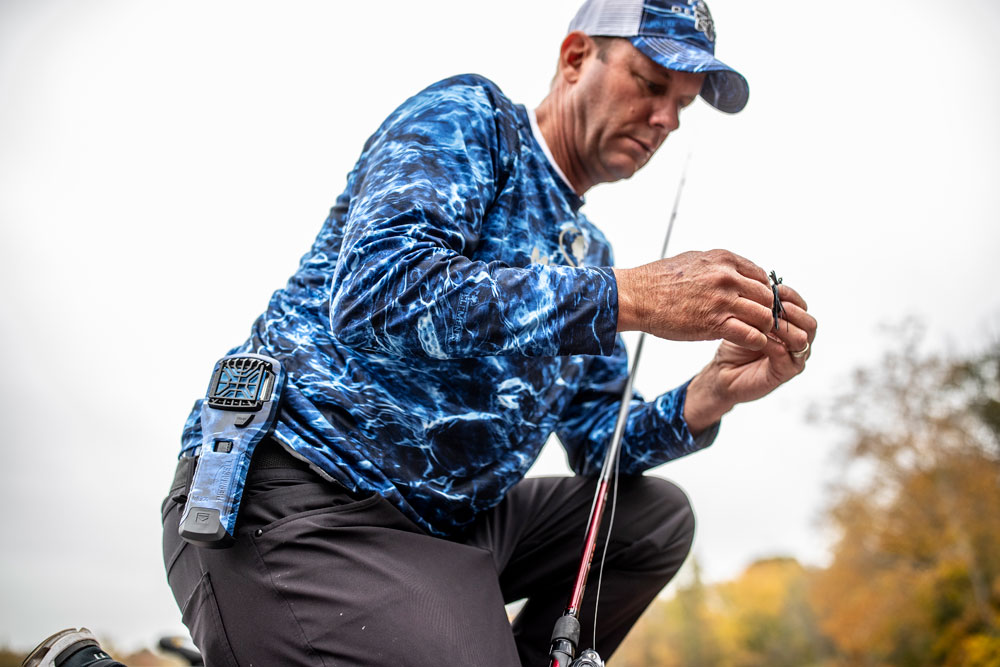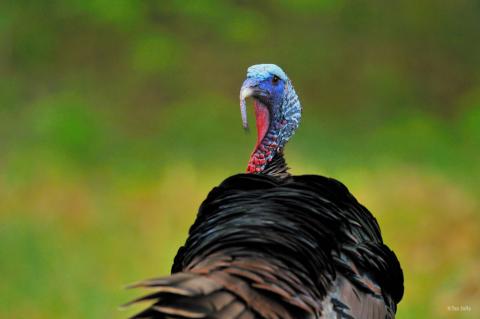provided by John Phillips
Mossy Oak Fishing Pro Kevin VanDam of Kalamazoo, Michigan, is one of only two professional fishermen to win four Bassmaster Classics. He’s also won three Major League Fishing Cups and is one of the fastest anglers finding and catching bass in every tournament he attends. He’s a very detailed angler and a keen observer of everything around him when he’s on the water. Sights and signals that most bass fishermen completely overlook are some of the keys to VanDam’s success. To learn more about VanDam, visit his web page at http://kevinvandam.com/ and his Facebook page.

Mossy Oak: Kevin, another attribute that you have is that you are always the first to try new tactics, new colors and new ways to bass fish. You don’t get caught in the trap of continuing to fish the same techniques or the same colors of lures that many of us do. How have you learned to change fishing tactics so quickly?
Kevin VanDam: In recent years, I’ve tried to learn all I can when I can about new bass-fishing methods and lures. I’ve had to learn this strategy the hard way because I’ve been a little too stubborn to give up a tactic or a lure that has worked for me in the past. However, I’ve learned that even if I’m having some success with the way I’m fishing, I need to experiment with other lures and fishing techniques to see if those new strategies will allow me to catch more bass quicker or better. Also, today anglers can carry so many various types of lures in our tackle boxes.
For instance, if I’m fishing scattered grass in a shallow, 5-foot-deep grass flat, I believe I can catch bass there on a Red Eyed Shad lipless crankbait, a jerkbait, a soft-plastic jerkbait like a Caffeine Shad, or a swimbait, or I can fish a bladed jig like the Strike King Thunder Cricket, or even a spinner bait. Although these lures are good choices for that type of environment, I want the bass to tell me which of those choices is the best lure to fish with on that day and at that time of day. They’ll tell me that by reacting to a lure and missing it, following it or not reacting to that particular lure. Even if I catch three or four bass on a bladed jig like the Thunder Cricket, I’ll still fish some of those other lures to see if the bass prefer those other lures over the Thunder Cricket. One trap we all often get caught in is saying to ourselves, “Hey, I’m catching bass on this lure, and I'll keep fishing it as long as I continue to catch bass with it.” But the question I ask myself is, “Although this lure is catching bass frequently, is there another lure that can catch bass faster than the lure I'm using?”
Mossy Oak: Once you’ve found the lure that the bass prefer to catch on that flat, for instance the Thunder Cricket, how do you decide on the color of lure you think the bass will bite most often?
VanDam: Generally, a natural color or a color that matches the bait that the bass are feeding on that day will be the best color to choose. I really can’t know whether their preferred bait is crawfish, shad, bluegill, perch, golden shiners or other forage that’s in the lake I’m fishing. I’ll select the lure color I think is the most natural color of the bait on which the bass are feeding. For instance, in clear water, I like a more natural-looking bait. In dirty water, I want a brighter-colored lure that’s more visible under stained-water conditions like a black-back chartreuse crankbait or a chartreuse-and-white spinner bait. Generally matching the hatch will be the best color of lure to fish in that lake at that time.
Oftentimes, knowing the right color to use requires some time and experimenting. For instance, if you catch a bass, and you look inside its mouth and see crawfish pincers in the back of its throat, you’ll know that crawfish-colored lures should produce the most bass on that lake at that time. Or, seeing crawfish that the bass has spit-up in your live well will give you another clue. Another clue happens when you’re reeling in a bass, and you see it spit-out a bunch of small baitfish. Then you’ll know the color and the size of lure to use.
For instance, I’ll fish a smaller-profile lure, if I’ve seen those smaller minnows coming out of the bass’ mouth. If the bass spits out a big bluegill, then you’ll know the size and color of lure to fish. If I spot an abundance of bass forage in an area, then I’ll attempt to determine the size and the color of that forage and select a lure that’s most likely the most available bait in that region.






























